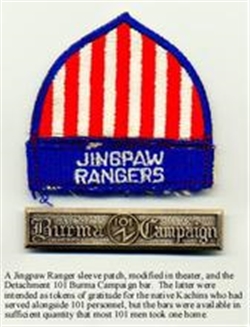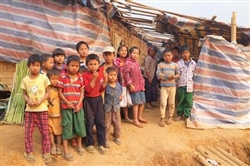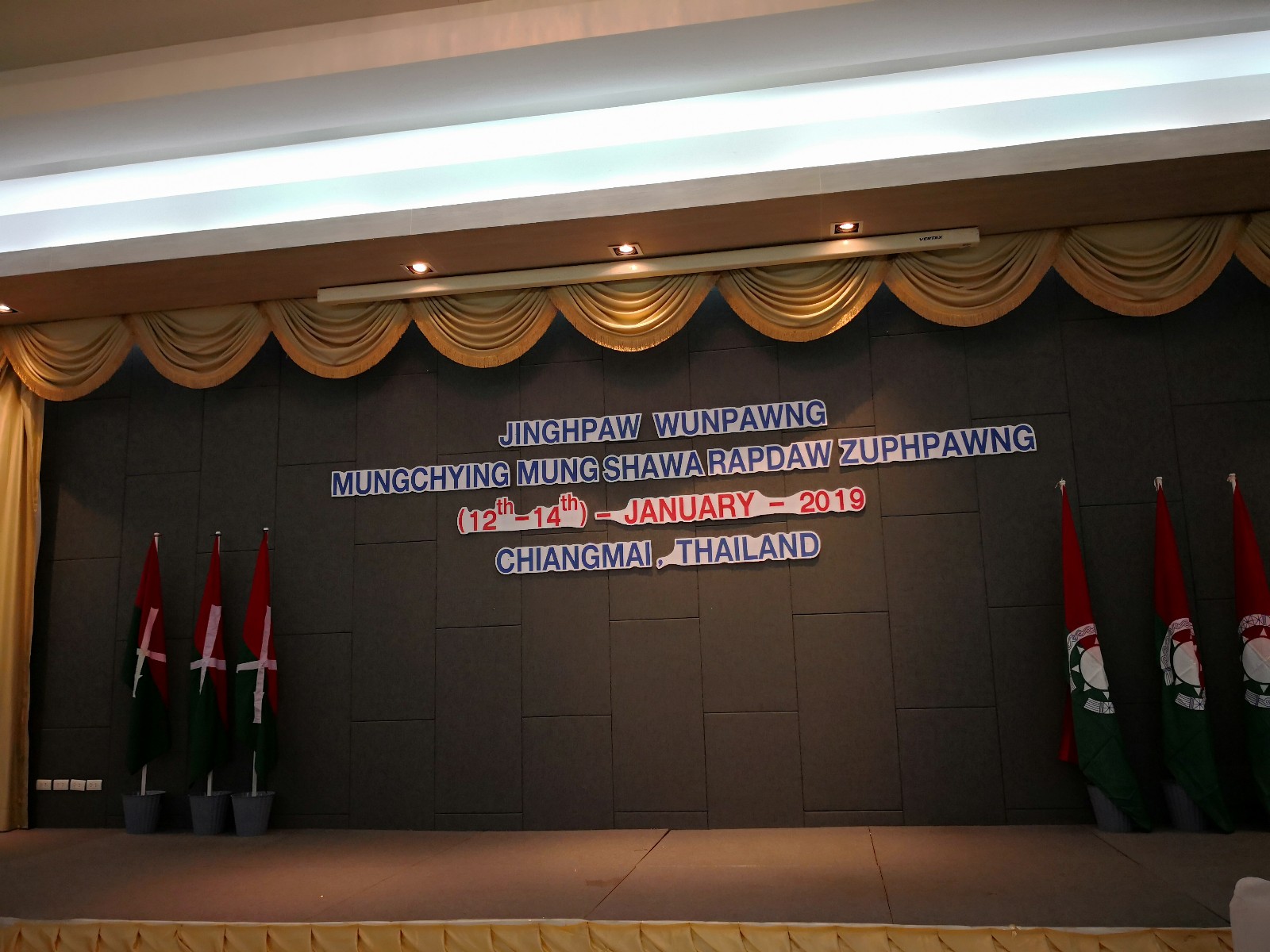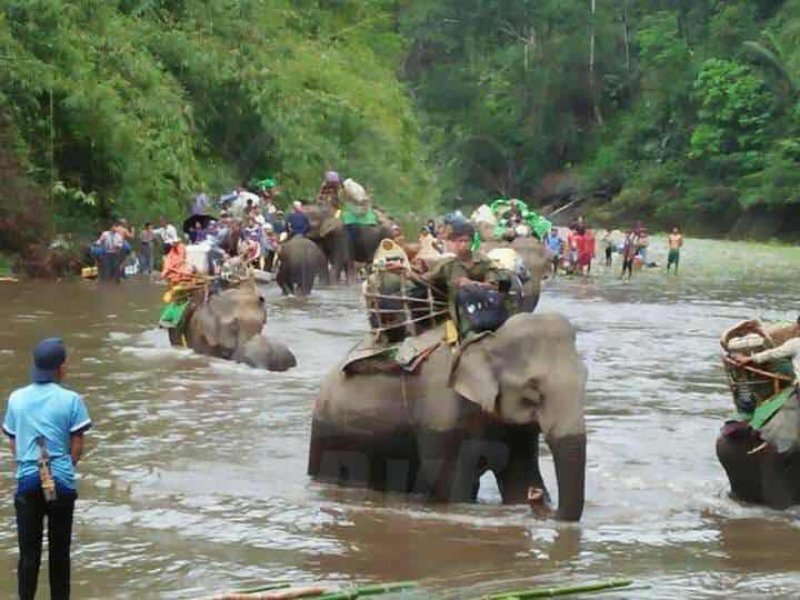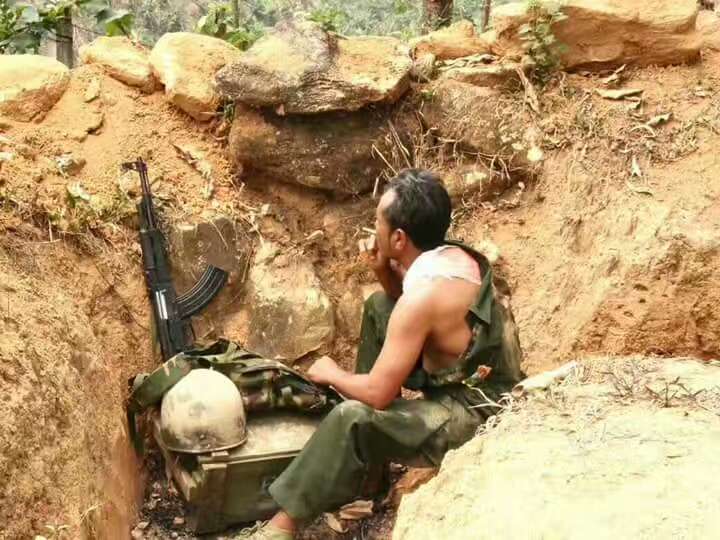您当前位置:
吳登盛領導的白宮Thein Sein heads to the White House
2013/5/21 23:21:19点击数(0)已有0人评论
吳登盛領導的白宮
通過作者Bertil林特納
清邁 - 緬甸總統吳登盛準備今天接受紅地毯待遇的訪問期間,在華盛頓白宮,最新的象徵性的姿態,在兩國之間的外交變暖的趨勢。流亡團體發誓遊行示威,反對前軍事指揮官的到來,包括克欽民族,在緬甸北部的同胞已在最近幾個月中首當其衝最為龐大的空中和炮火,但在該國的60年的內戰推出。
這次訪問還談到,在經歷了一系列的暴徒襲擊穆斯林的家園和商店,殺死了分數而thecountry的執法機構,至少在最初的混亂視而不見。
暴力預計不會影響美國的消息登盛(Thein Sein),誰無疑將被稱讚為他的政府改革並宴請。緬甸已經從受到美國制裁和抵制的盟友在該地區的一個重要的新興賤民。緬甸被廣泛視為操縱換屆選舉於2010年11月,釋放數百名政治犯,並允許更多的媒體自由在任何時間以來,軍方在1962年的政變上台,並保持控制下的政府舉行的領帶已經轉虧為盈各種偽裝自從。
前美國國務卿希拉里·克林頓說,過去兩年奧巴馬政府外交政策的主要突破在她任職期間,她排在緬甸發生的事件。感知的成功與美國的地區安全問題比改善緬甸政府的人權和民主的記錄更多的事情要做。
仔細看看在美緬關係的歷史表明,地區安全關切,緬甸鄰近中國,一直比緬甸國內政治更重要的是美國。登盛(Thein Sein)的準文職政府面對面的人的中國更獨立的立場,顯然是華盛頓的耳朵的音樂。
第一次因為美國對緬甸實施制裁響應軍隊的1988致命鎮壓親民主示威者,軍方對雙方之間的軍事合作似乎是可能的。復牌的戰略關係將符合奧巴馬總統的“支點”的政策,它的最終目的是遏制中國在該地區的影響力。然而,分歧都已經明顯五角大樓的戰略前景,並在州立部,其中可以不忽略報告由人類權利組織和關注持續的虐待和暴行緬甸軍犯下的國會山表示,尤其是在該國的民族區域之間。
然而,有一個後門,五角大樓可能比緬甸的殘酷步兵的合作更好地滿足美國的安全利益。緬甸時報5月13日報導,美國的海軍武官,隊長肖恩大砲,緬甸首都內比都4月23日,以滿足緬甸海軍總司令副海軍上將Thura THET的SWE。這是沒有機會會議的前一天奧巴馬訪問緬甸去年11月19日“悄然登上了美國和緬甸海軍在安達曼海的”好人理查德“號兩棲攻擊艦”,“緬甸時報”報導。
緬甸還建立了與印度海軍合作,另一個區域電力厭惡看到中國的影響力拉伸,南至印度洋。今年三月,緬甸海軍兩艘軍艦停靠在印度的港口城市維沙卡帕特南,這也是印度海軍東部司令部的總部。據報導,印度和緬甸海軍進行了聯合軍事演習,緬甸的可可群島登陸後島,印度安達曼群島最北端之間的海上邊界附近。
從華盛頓的角度來看,緬甸的海軍被認為是“乾淨”的,因為它比軍隊離岸經營,從來沒有進入民族地區,其中最嚴重的侵權行為發生時,根據美國官員和其他區域分析師。印度和美國進行聯合海軍演習在印度洋多年,現在他們似乎有一個潛在的新的萌芽在緬甸的盟友 - 而定,當然,緬甸是否真正有意疏遠自己從中國的戰略懷抱。
中國是緬甸的主要支持者在聯合國經常批評西方國家,包括美國,前軍政權惡劣的人權記錄。經過幾十年的穩步參與,緬甸是中國重要的戰略和經濟,作為一個出口到印度洋,並作為重要的石油和天然氣管道正在修建連接中國內陸的雲南省南部的安達曼海主機。緬甸也是一個重要的能量來源,包括水力發電,以及礦物和木材。從北京的角度來看,它可以病不起“輸”緬甸的美國和西方。
戰略的中間地帶
緬甸已經發現了自己在美國和中國的戰略利益中間,這是不是第一次。美國建立正式關係的,則稱為緬甸,緬甸前夕,國家在1948年從英國的殖民統治獲得獨立。美國援助計劃開始後不久於1950年。但關係很快惡化,當它被發現的中央情報局(CIA)秘密支持中國國民黨軍隊在中國內戰中戰敗後,已撤退到該國東部撣邦。成千上萬國民黨士兵誰不能參加蔣介石的出走台灣時,毛澤東的共產黨接管大陸集結孟薩在撣邦等地。
來自泰國和台灣,竟然是“重新征服”中國共產黨妄圖飛行武器和彈藥。美國中央情報局的的國民黨支持計劃是如此秘密,甚至沒有美國大使大衛鍵,在仰光,緬甸政府意識到這一點,直到他的攝影和其他證據。 1952年4月,他辭了職厭惡回到華盛頓,認為國民黨在緬甸的行動有美國中央情報局支持“巨資花費了我們的善意和信任”。它並沒有幫助,當時的美國副總統理查德·尼克松訪問仰光於1953年,構成身著緬甸傳統禮服的攝影師。
在中央情報局的支持國民黨的侵略,緬甸政府在1953年終止所有美國的援助方案,並把此事向聯合國。緬甸通過U敏登,或者他被親切地稱為“蒙蒂叔叔”,也許外交官在該國歷史上最輝煌的代表。幾個聯合國決議之後,國民黨被要求離開緬甸和特種飛機總部設在泰國,成千上萬的士兵被疏散到台灣。但不是所有的人是民族主義的中國,許多人已招募的hilltribesmen打增援的同時,交付。
最終挫敗了國民黨旅長俞覺ZAW,緬甸軍隊已經產生最優秀的人員之一的帶領下在20世紀50年代後的幾次軍事行動。儘管如此,但直到1961年,國民黨終於被趕出了緬甸。 1月26日這一年,三個師的士兵從中國人民的解放軍(PLA),共20000人,越過邊界進入緬甸。他們席捲人類波撣邦東部的丘陵之間,在一個代號為“湄公河操作”,迫使國民黨逃往鄰國泰國,仍有部分留在該國北部地區的運動。
緬甸軍隊抓獲的國民黨基地時,他們發現了大量美制武器和彈藥。當消息在當地報紙報導,美國大使館外舉行暴力示威,在仰光市中心的商人街。然而,無論是緬甸政府,也不是中國曾經承認,解放軍形成的力量,推動了國民黨的東部邊境地區的核心。
屆時,美國和緬甸之間的援助和其他合作已恢復,包括富布萊特,亞洲和美國福特基金會項目。但那些停下來後,1962年的軍事政變和社會主義的“緬甸的方式引進”下的獨裁者奈溫將軍。儘管如此,緬甸從來沒有加入任何反美的地區或世界的“社會主義”陣營。 1966年9月,奈溫美國進行國事訪問,並會見了時任美國總統林登·約翰遜 - 最後一個這樣的高級官員訪問前,登盛(Thein Sein)的行本週華盛頓。
奈溫可能已經稱呼自己是“社會主義”,但作為抵禦共產主義在亞洲的擴張,美國看到了他的獨裁軍事政權。後共產黨中國支持緬甸推力(CPB)到緬甸東北部在1968年後變得尤其重要。奈溫1966年訪問當時,中國剛剛開始在東南亞出口毛派革命。
間諜間諜關係
國民黨潰敗後不久,美國中央情報局已開始與緬甸的軍事情報,包括人員培訓的關係。在1957年,至少有兩個緬甸情報人員被送往中情局的主要訓練設施在該地區對美持有的太平洋塞班島。這些丁烏,或“眼鏡丁烏”,因為他知道在家裡,誰願意成為緬甸軍事情報局在1962年之後實際上的行政,曾經被認為是奈溫的繼承人。他曾擔任特務頭子,直到他被趕下台,被控貪污,並於1983年被判入獄,可能是因為他太強大了,甚至奈溫增長。
該其他塞班培訓的緬甸官員,萊貌,上升到成為緬甸外長在20世紀80年代初。與此同時,中央情報局贊助的“研究單位”成立於仰光跟踪CPB和其中國支持者。美軍派出的也是緬甸的武器,以幫助對抗CPB,雖然這一軍事援助是由所有帳戶謙虛,緬甸軍隊在它自己的國防工業生產的武器主要是依靠。
幾個緬甸軍官也獲得了在美國的訓練。其中,出席了在利文沃思堡參謀學院在1955-56和1988年鎮壓後,作為一個領導的全國民主聯盟(民盟)參加民運姬貌。另外,根覺Htin,被訓練在美國同樣的設施在1962年,他的整個生命作為一般及行政工作人員的緬甸軍從1976-85仍然忠於政府。從1976-1988,他還擔任過緬甸國防部長。
1966年奈溫的國事訪問,是不是他做了在美國的唯一的旅遊。 1987年4月,他做了一個秘密的為期五天的行程,俄克拉何馬州,以滿足Ardith Dolese,一個富裕的美國女子在該州的石油產業中擁有權益。然後不再總裁而是執政的緬甸社會主義綱領黨主席,因此仍然在該國最強大的政治家,奈溫帶來了與他的隨從45人,包括五名高級軍事指揮官,外長和國防部長,他的私人醫生,他自己的家庭成員,在專機。
非凡訪問的目的,從來沒有被公開,但人們普遍認為,一般感興趣振興緬甸垂死的石油工業,力圖扭轉該國的嚴重經濟衰退。強調古怪的非正式訪問,代表團還據說支付了短暫訪問洛杉磯迪斯尼樂園外。
緬甸軍方1988年親民主起義的致命鎮壓了這些關係結束了。美國徵收懲罰性的經濟和個人的軍政府成員後來有針對性的金融制裁開車關係到歷史低點。將軍出人意料地決定,在2005年將首都從仰光到內比都已經被認為是一個可能的先發製人的美國入侵前政權的恐懼的部分動機。
關係開始解凍後的2010年11月換屆選舉和釋放民運圖標昂山素季的軟禁。關係回暖相當吳登盛政府決定暫停贊助中國在克欽邦的密松水電項目後,於2011年9月。
如果證明是成功的和非爭議海軍合作,下一步可能會重新接納緬甸軍官到美國的國防學院,一個程序,在1988年屠殺之後終止。拉維巴拉拉姆,在喬治敦大學外交事務學院的學者,已經已經編譯的一個列表前緬甸軍隊人員曾經了在國際軍事教育和培訓(IMET)在美國,和誰,因此可以被看到“友好”對華盛頓。
其中吳年吞,前司令海軍司令和副總裁,而目前的緬甸國防武官到美國,敏登。國防昂解凍副部長,前駐日本大使,和敏屯,準將在海軍船塢,也IMET校友。有肥沃的軍方對軍方的地面的基礎上,但在這個過程中,緬甸可能會發現自己在中間的一個新的大國博弈,它有很少或根本沒有控制。
雖然奧巴馬政府讚揚吳登盛華盛頓的動機,他的政府已經對人權和民主的進步,他的政府從事更牢固地植根於地區安全問題。
作者Bertil林特納是前記者與遠東經濟評論“和作者對緬甸七本書,包括昂山素季和緬甸的民主和緬甸的鬥爭反抗:自1948年鴉片戰爭和叛亂。目前,他是一個作家與亞太媒體服務。
(版權所有2013年亞洲時報在線(控股)有限公司保留所有權利。請聯繫我們銷售,銀團貸款和再版)
Thein Sein heads to the White House
By Bertil Lintner
CHIANG MAI - Myanmar President Thein Sein is poised to receive red carpet treatment today during a visit to the White House in Washington, the latest symbolic gesture in a diplomatic warming trend between the two countries. Groups of exiles have vowed to demonstrate against the former military commander's arrival, including ethnic Kachins whose compatriots in northern Myanmar have in recent months borne the brunt of the most massive aerial and artillery barrage yet launched in the country's 60 years of civil war.
The visit also comes in the wake of a series of mob attacks on Muslim homes and shops that have killed scores while the country's law enforcement agencies, at least initially, turned a blind eye to the mayhem.
The violence is not expected to influence the US's message to Thein Sein, who will undoubtedly be praised and feted for his government's reforms. Myanmar has gone from being a pariah subjected to US sanctions and boycotts to an important emerging ally in the region. The turnaround in ties has come as Myanmar held what were widely viewed as rigged general elections in November 2010, released hundreds of political prisoners and allowed for more media freedom at any time since the military took power in a 1962 coup and maintained control of government under various guises ever since.
Former US secretary of state Hillary Clinton has said she ranks events in Myanmar over the past two years as the Barack Obama administration's main foreign policy breakthrough during her tenure. That perceived success has more to do with the US's regional security concerns than improvements in the Myanmar government's human rights and democracy records.
A closer look at the history of US-Myanmar relations shows that regional security concerns, and Myanmar's proximity to China, have always been more important to the US than domestic Myanmar politics. And the more independent stance of Thein Sein's quasi-civilian government vis-a-vis China has clearly been music to Washington's ears.
For the first time since the US imposed sanctions against Myanmar in response to the military's 1988 lethal crackdown on pro-democracy demonstrators, military-to-military cooperation between the two sides seems possible. A resumption of strategic ties would fit with President Obama's "pivot" policy, which is ultimately aimed at containing China's influence in the region. Yet disagreements are already evident between the Pentagon's more strategic outlook and the State Department, which cannot ignore reports by human rights organizations and concerns expressed on Capitol Hill about ongoing abuses and atrocities committed by the Myanmar military, especially in the country's ethnic areas.
There is, however, a backdoor for the Pentagon, one that may suit the US's security interests better than cooperation with Myanmar's brutal infantry. The Myanmar Times newspaper reported on May 13 that the US naval attache to Myanmar, Captain Sean Cannon, traveled to the capital Naypyidaw on April 23 to meet Myanmar Navy chief Vice Admiral Thura Thet Swe. It was no chance meeting: the day before Obama visited Myanmar on November 19 last year "the US and Myanmar navies met quietly aboard the amphibious assault ship USS Bonhomme Richard in the Andaman Sea", the Myanmar Times reported.
Myanmar has also established naval cooperation with India, another regional power in the Indian Ocean that is loathe to see China's influence stretch that far south. In March, two ships from the Myanmar navy docked at the Indian port city of Vishakhapatnam, which is also the headquarters of the Indian Navy's Eastern Command. The Indian and Myanmar navies reportedly carried out a joint exercise near the maritime boundary between Myanmar's Coco Islands and Landfall Island, the northernmost of the Indian Andaman islands.
From Washington's perspective, Myanmar's Navy is considered "cleaner" than the army because it operates offshore and never enters the ethnic areas where the worst abuses occur, according to US officials and other regional analysts. India and the US have carried out joint naval exercises in the Indian Ocean for years, and now they seem to have a potential new budding ally in Myanmar - depending, of course, on whether Myanmar genuinely intends to distance itself from China's strategic embrace.
China was Myanmar's main backer at the United Nations when Western countries, including the US, frequently criticized the former military regime's abysmal human rights record. After decades of steady engagement, Myanmar is strategically and economically important to China, both as an outlet to the Indian Ocean and as host to vital oil and gas pipelines being built to connect China's landlocked southern province of Yunnan with the Andaman Sea. Myanmar is also an important source of energy, including hydroelectric power, as well as minerals and timber. From Beijing's perspective, it can ill-afford to "lose" Myanmar to the US and the West.
Strategic middle ground
It is not the first time Myanmar has found itself in the middle of US and Chinese strategic interests. The US established formal relations with Myanmar, then known as Burma, on the eve of the country achieving independence from British colonialism in 1948. US aid programs began soon thereafter in 1950. But relations soon soured when it was discovered that the Central Intelligence Agency (CIA) was providing clandestine support for Nationalist Chinese troops, which had retreated into the country's eastern Shan State after their defeat in the civil war in China. Thousands of Kuomintang (KMT) soldiers who could not join Chiang Kai-shek's exodus to Taiwan when Mao Zedong's communists took over the mainland regrouped at Mong Hsat and other places in Shan State.
Arms and ammunition were flown in from Thailand and Taiwan in what turned out to be a futile attempt to "re-conquer" China from the communists. The CIA's KMT support program was so secret that not even the US ambassador in Yangon, David Key, was aware of it until Myanmar authorities provided him with photographic and other evidence. He resigned in disgust in April 1952 and returned to Washington, arguing that CIA support for the KMT's operations in Myanmar had "cost us heavily in terms of ... goodwill and trust". It did not help that then US vice president Richard Nixon visited Yangon in 1953 and posed dressed in traditional Myanmar dress for photographers.
In response to the CIA's support for the KMT's aggression, the Myanmar government terminated all American aid programs in 1953 and brought the matter to the United Nations. Myanmar was there represented by U Myint Thein, or "Uncle Monty" as he was affectionately known, perhaps the most brilliant diplomat in the country's history. Following several UN resolutions, the KMT was requested to leave Myanmar and thousands of its soldiers were evacuated to Taiwan by special aircraft based in Thailand. But not all of them were Nationalist Chinese; many were hilltribesmen who had been recruited to fight at the same time as reinforcements were delivered.
The KMT was eventually thwarted after several military campaigns in the 1950s led by Brigadier Kyaw Zaw, one of the most outstanding officers that the Myanmar army has produced. Still, it was not until 1961 that the KMT was finally driven out of Myanmar. On January 26 that year, three divisions of soldiers from China's People's Liberation Army (PLA), or a total of 20,000 men, crossed the border into Myanmar. They swept in human waves down across the hills of eastern Shan State in a campaign code-named the "Mekong River Operation" that forced the KMT to flee into neighboring Thailand, where some still remain in the country's northern areas.
When Myanmar troops marched on the captured KMT bases, they found large quantities of US-made arms and ammunition. When the news was reported in local newspapers, violent demonstrations were held outside the US embassy on Merchant Street in downtown Yangon. However, neither the Myanmar government nor the Chinese have ever acknowledged that the PLA formed the core of forces that drove the KMT out of the eastern border areas.
By then, aid and other cooperation between the US and Myanmar had been resumed, including Fulbright, Asia and Ford Foundation programs. But those came to a halt after the 1962 military coup and the introduction of the "Burmese way to Socialism" under dictator Gen Ne Win. Nonetheless, Myanmar never joined any anti-US "socialist" bloc in the region or the world. In September 1966, Ne Win paid a state visit to the US and met then US president Lyndon Johnson - the last such high-ranking official visit before Thein Sein's trip this week to Washington.
Ne Win may have styled himself a "socialist", but the US saw his authoritarian military regime as a bulwark against the expansion of communism in Asia. This became especially important after the Chinese-supported Communist Party of Burma's (CPB) thrust into northeastern Myanmar after 1968. At the time of Ne Win's 1966 visit, China was just beginning to export Maoist revolution across Southeast Asia.
Spy-to-spy ties
Shortly after the KMT debacle, the CIA had commenced a relationship with Myanmar's military intelligence that included training of its officers. In 1957, at least two Myanmar intelligence officers were sent to the CIA's main training facility in the region on the US-held Pacific island of Saipan. One of these was Tin Oo, or "Spectacles Tin Oo" as he was known at home, who would become the de facto chief of Myanmar's military intelligence after 1962 and once was considered Ne Win's heir apparent. He served as spy chief until he was ousted, charged with corruption and jailed in 1983, probably because he had grown too powerful even for Ne Win.
The other Saipan-trained Myanmar officer, Lay Maung, rose to become Myanmar's foreign minister in the early 1980s. At the same time, a CIA-sponsored "research unit" was formed in Yangon to track the CPB and its Chinese backers. The US also sent weapons to Myanmar to help fight the CPB, although this military aid was by all accounts modest and the Myanmar army depended mainly on arms produced in its own defense industries.
Several Myanmar army officers also received training in the US. Among them was Kyi Maung, who attended staff college at Fort Leavenworth in 1955-56 and after the 1988 crackdown joined the pro-democracy movement as a leader of the National League for Democracy (NLD). Another, Gen Kyaw Htin, was trained at the same US facility in 1962 and remained loyal to the government throughout his life as a general and chief of staff of the Myanmar Army from 1976-85. He also served as Myanmar's defense minister from 1976-1988.
Ne Win's 1966 state visit was not the only tour he made of the US. In April 1987, he made a secret five-day trip to Oklahoma to meet Ardith Dolese, a wealthy American woman who had interests in the state's oil industry. Then no longer president but rather chairman of the ruling Burma Socialist Program Party and as such still the most powerful politician in the country, Ne Win brought with him an entourage of 45 people, including five high-ranking military commanders, the foreign and defense ministers, his personal doctor, and members of his own family in a chartered plane.
The purpose of the extraordinary visit has never been made public but it is widely believed that the general was interested in revitalizing Myanmar's then moribund oil industry in a bid to reverse the country's severe economic decline. Underscoring the oddity of the unofficial visit, the delegation also reportedly paid a brief visit to Disneyland outside Los Angeles.
The Myanmar military's lethal suppression of the 1988 pro-democracy uprising brought those ties to an end. The US's imposition of punitive economic and later targeted financial sanctions against individual junta members drove relations to an all-time low. The generals surprise decision to move the capital city from Yangon to Naypyidaw in 2005 is believed to have been motivated in part by the previous regime's fear of a possible pre-emptive US invasion.
Relations started to thaw after the November 2010 general election and release of pro-democracy icon Aung San Suu Kyi from house arrest. Relations warmed considerably in September 2011 after Thein Sein's government decided to suspend a Chinese-sponsored hydroelectric project at Myitsone in Kachin State.
If naval cooperation proves successful and non-controversial, the next step could be to re-admit Myanmar army officers into US defense colleges, a program that was terminated in the wake of 1988 killings. Ravi Balaram, a scholar at Georgetown University's School of Foreign Service, has already compiled a list of former Myanmar army officers who once took part in International Military Education and Training (IMET) in the US, and who therefore could be seen as "friendly" towards Washington.
Among them are Nyan Htun, former commander-in-chief of the Navy and now vice president, and the current Myanmar defense attache to the United States, Myint Thein. Deputy Minister of Defense Aung Thaw, a former ambassador to Japan, and Myint Tun, Commodore at the Naval Dockyard, are also IMET alumni. There is fertile military-to-military ground to build on, but in the process Myanmar may find itself in the middle of a new great power game over which it has little or no control.
While the Obama administration commends Thein Sein for the progress his government has made on human rights and democracy, Washington's motivations for engaging his government are more firmly grounded in issues of regional security.
Bertil Lintner is a former correspondent with the Far Eastern Economic Review and author of seven books on Myanmar including Aung San Suu Kyi and Burma's Struggle for Democracy and Burma in Revolt: Opium and Insurgency Since 1948. He is currently a writer with Asia Pacific Media Services.
(Copyright 2013 Asia Times Online (Holdings) Ltd. All rights reserved. Please contact us about sales, syndication and republishing)
通過作者Bertil林特納
清邁 - 緬甸總統吳登盛準備今天接受紅地毯待遇的訪問期間,在華盛頓白宮,最新的象徵性的姿態,在兩國之間的外交變暖的趨勢。流亡團體發誓遊行示威,反對前軍事指揮官的到來,包括克欽民族,在緬甸北部的同胞已在最近幾個月中首當其衝最為龐大的空中和炮火,但在該國的60年的內戰推出。
這次訪問還談到,在經歷了一系列的暴徒襲擊穆斯林的家園和商店,殺死了分數而thecountry的執法機構,至少在最初的混亂視而不見。
暴力預計不會影響美國的消息登盛(Thein Sein),誰無疑將被稱讚為他的政府改革並宴請。緬甸已經從受到美國制裁和抵制的盟友在該地區的一個重要的新興賤民。緬甸被廣泛視為操縱換屆選舉於2010年11月,釋放數百名政治犯,並允許更多的媒體自由在任何時間以來,軍方在1962年的政變上台,並保持控制下的政府舉行的領帶已經轉虧為盈各種偽裝自從。
前美國國務卿希拉里·克林頓說,過去兩年奧巴馬政府外交政策的主要突破在她任職期間,她排在緬甸發生的事件。感知的成功與美國的地區安全問題比改善緬甸政府的人權和民主的記錄更多的事情要做。
仔細看看在美緬關係的歷史表明,地區安全關切,緬甸鄰近中國,一直比緬甸國內政治更重要的是美國。登盛(Thein Sein)的準文職政府面對面的人的中國更獨立的立場,顯然是華盛頓的耳朵的音樂。
第一次因為美國對緬甸實施制裁響應軍隊的1988致命鎮壓親民主示威者,軍方對雙方之間的軍事合作似乎是可能的。復牌的戰略關係將符合奧巴馬總統的“支點”的政策,它的最終目的是遏制中國在該地區的影響力。然而,分歧都已經明顯五角大樓的戰略前景,並在州立部,其中可以不忽略報告由人類權利組織和關注持續的虐待和暴行緬甸軍犯下的國會山表示,尤其是在該國的民族區域之間。
然而,有一個後門,五角大樓可能比緬甸的殘酷步兵的合作更好地滿足美國的安全利益。緬甸時報5月13日報導,美國的海軍武官,隊長肖恩大砲,緬甸首都內比都4月23日,以滿足緬甸海軍總司令副海軍上將Thura THET的SWE。這是沒有機會會議的前一天奧巴馬訪問緬甸去年11月19日“悄然登上了美國和緬甸海軍在安達曼海的”好人理查德“號兩棲攻擊艦”,“緬甸時報”報導。
緬甸還建立了與印度海軍合作,另一個區域電力厭惡看到中國的影響力拉伸,南至印度洋。今年三月,緬甸海軍兩艘軍艦停靠在印度的港口城市維沙卡帕特南,這也是印度海軍東部司令部的總部。據報導,印度和緬甸海軍進行了聯合軍事演習,緬甸的可可群島登陸後島,印度安達曼群島最北端之間的海上邊界附近。
從華盛頓的角度來看,緬甸的海軍被認為是“乾淨”的,因為它比軍隊離岸經營,從來沒有進入民族地區,其中最嚴重的侵權行為發生時,根據美國官員和其他區域分析師。印度和美國進行聯合海軍演習在印度洋多年,現在他們似乎有一個潛在的新的萌芽在緬甸的盟友 - 而定,當然,緬甸是否真正有意疏遠自己從中國的戰略懷抱。
中國是緬甸的主要支持者在聯合國經常批評西方國家,包括美國,前軍政權惡劣的人權記錄。經過幾十年的穩步參與,緬甸是中國重要的戰略和經濟,作為一個出口到印度洋,並作為重要的石油和天然氣管道正在修建連接中國內陸的雲南省南部的安達曼海主機。緬甸也是一個重要的能量來源,包括水力發電,以及礦物和木材。從北京的角度來看,它可以病不起“輸”緬甸的美國和西方。
戰略的中間地帶
緬甸已經發現了自己在美國和中國的戰略利益中間,這是不是第一次。美國建立正式關係的,則稱為緬甸,緬甸前夕,國家在1948年從英國的殖民統治獲得獨立。美國援助計劃開始後不久於1950年。但關係很快惡化,當它被發現的中央情報局(CIA)秘密支持中國國民黨軍隊在中國內戰中戰敗後,已撤退到該國東部撣邦。成千上萬國民黨士兵誰不能參加蔣介石的出走台灣時,毛澤東的共產黨接管大陸集結孟薩在撣邦等地。
來自泰國和台灣,竟然是“重新征服”中國共產黨妄圖飛行武器和彈藥。美國中央情報局的的國民黨支持計劃是如此秘密,甚至沒有美國大使大衛鍵,在仰光,緬甸政府意識到這一點,直到他的攝影和其他證據。 1952年4月,他辭了職厭惡回到華盛頓,認為國民黨在緬甸的行動有美國中央情報局支持“巨資花費了我們的善意和信任”。它並沒有幫助,當時的美國副總統理查德·尼克松訪問仰光於1953年,構成身著緬甸傳統禮服的攝影師。
在中央情報局的支持國民黨的侵略,緬甸政府在1953年終止所有美國的援助方案,並把此事向聯合國。緬甸通過U敏登,或者他被親切地稱為“蒙蒂叔叔”,也許外交官在該國歷史上最輝煌的代表。幾個聯合國決議之後,國民黨被要求離開緬甸和特種飛機總部設在泰國,成千上萬的士兵被疏散到台灣。但不是所有的人是民族主義的中國,許多人已招募的hilltribesmen打增援的同時,交付。
最終挫敗了國民黨旅長俞覺ZAW,緬甸軍隊已經產生最優秀的人員之一的帶領下在20世紀50年代後的幾次軍事行動。儘管如此,但直到1961年,國民黨終於被趕出了緬甸。 1月26日這一年,三個師的士兵從中國人民的解放軍(PLA),共20000人,越過邊界進入緬甸。他們席捲人類波撣邦東部的丘陵之間,在一個代號為“湄公河操作”,迫使國民黨逃往鄰國泰國,仍有部分留在該國北部地區的運動。
緬甸軍隊抓獲的國民黨基地時,他們發現了大量美制武器和彈藥。當消息在當地報紙報導,美國大使館外舉行暴力示威,在仰光市中心的商人街。然而,無論是緬甸政府,也不是中國曾經承認,解放軍形成的力量,推動了國民黨的東部邊境地區的核心。
屆時,美國和緬甸之間的援助和其他合作已恢復,包括富布萊特,亞洲和美國福特基金會項目。但那些停下來後,1962年的軍事政變和社會主義的“緬甸的方式引進”下的獨裁者奈溫將軍。儘管如此,緬甸從來沒有加入任何反美的地區或世界的“社會主義”陣營。 1966年9月,奈溫美國進行國事訪問,並會見了時任美國總統林登·約翰遜 - 最後一個這樣的高級官員訪問前,登盛(Thein Sein)的行本週華盛頓。
奈溫可能已經稱呼自己是“社會主義”,但作為抵禦共產主義在亞洲的擴張,美國看到了他的獨裁軍事政權。後共產黨中國支持緬甸推力(CPB)到緬甸東北部在1968年後變得尤其重要。奈溫1966年訪問當時,中國剛剛開始在東南亞出口毛派革命。
間諜間諜關係
國民黨潰敗後不久,美國中央情報局已開始與緬甸的軍事情報,包括人員培訓的關係。在1957年,至少有兩個緬甸情報人員被送往中情局的主要訓練設施在該地區對美持有的太平洋塞班島。這些丁烏,或“眼鏡丁烏”,因為他知道在家裡,誰願意成為緬甸軍事情報局在1962年之後實際上的行政,曾經被認為是奈溫的繼承人。他曾擔任特務頭子,直到他被趕下台,被控貪污,並於1983年被判入獄,可能是因為他太強大了,甚至奈溫增長。
該其他塞班培訓的緬甸官員,萊貌,上升到成為緬甸外長在20世紀80年代初。與此同時,中央情報局贊助的“研究單位”成立於仰光跟踪CPB和其中國支持者。美軍派出的也是緬甸的武器,以幫助對抗CPB,雖然這一軍事援助是由所有帳戶謙虛,緬甸軍隊在它自己的國防工業生產的武器主要是依靠。
幾個緬甸軍官也獲得了在美國的訓練。其中,出席了在利文沃思堡參謀學院在1955-56和1988年鎮壓後,作為一個領導的全國民主聯盟(民盟)參加民運姬貌。另外,根覺Htin,被訓練在美國同樣的設施在1962年,他的整個生命作為一般及行政工作人員的緬甸軍從1976-85仍然忠於政府。從1976-1988,他還擔任過緬甸國防部長。
1966年奈溫的國事訪問,是不是他做了在美國的唯一的旅遊。 1987年4月,他做了一個秘密的為期五天的行程,俄克拉何馬州,以滿足Ardith Dolese,一個富裕的美國女子在該州的石油產業中擁有權益。然後不再總裁而是執政的緬甸社會主義綱領黨主席,因此仍然在該國最強大的政治家,奈溫帶來了與他的隨從45人,包括五名高級軍事指揮官,外長和國防部長,他的私人醫生,他自己的家庭成員,在專機。
非凡訪問的目的,從來沒有被公開,但人們普遍認為,一般感興趣振興緬甸垂死的石油工業,力圖扭轉該國的嚴重經濟衰退。強調古怪的非正式訪問,代表團還據說支付了短暫訪問洛杉磯迪斯尼樂園外。
緬甸軍方1988年親民主起義的致命鎮壓了這些關係結束了。美國徵收懲罰性的經濟和個人的軍政府成員後來有針對性的金融制裁開車關係到歷史低點。將軍出人意料地決定,在2005年將首都從仰光到內比都已經被認為是一個可能的先發製人的美國入侵前政權的恐懼的部分動機。
關係開始解凍後的2010年11月換屆選舉和釋放民運圖標昂山素季的軟禁。關係回暖相當吳登盛政府決定暫停贊助中國在克欽邦的密松水電項目後,於2011年9月。
如果證明是成功的和非爭議海軍合作,下一步可能會重新接納緬甸軍官到美國的國防學院,一個程序,在1988年屠殺之後終止。拉維巴拉拉姆,在喬治敦大學外交事務學院的學者,已經已經編譯的一個列表前緬甸軍隊人員曾經了在國際軍事教育和培訓(IMET)在美國,和誰,因此可以被看到“友好”對華盛頓。
其中吳年吞,前司令海軍司令和副總裁,而目前的緬甸國防武官到美國,敏登。國防昂解凍副部長,前駐日本大使,和敏屯,準將在海軍船塢,也IMET校友。有肥沃的軍方對軍方的地面的基礎上,但在這個過程中,緬甸可能會發現自己在中間的一個新的大國博弈,它有很少或根本沒有控制。
雖然奧巴馬政府讚揚吳登盛華盛頓的動機,他的政府已經對人權和民主的進步,他的政府從事更牢固地植根於地區安全問題。
作者Bertil林特納是前記者與遠東經濟評論“和作者對緬甸七本書,包括昂山素季和緬甸的民主和緬甸的鬥爭反抗:自1948年鴉片戰爭和叛亂。目前,他是一個作家與亞太媒體服務。
(版權所有2013年亞洲時報在線(控股)有限公司保留所有權利。請聯繫我們銷售,銀團貸款和再版)
Thein Sein heads to the White House
By Bertil Lintner
CHIANG MAI - Myanmar President Thein Sein is poised to receive red carpet treatment today during a visit to the White House in Washington, the latest symbolic gesture in a diplomatic warming trend between the two countries. Groups of exiles have vowed to demonstrate against the former military commander's arrival, including ethnic Kachins whose compatriots in northern Myanmar have in recent months borne the brunt of the most massive aerial and artillery barrage yet launched in the country's 60 years of civil war.
The visit also comes in the wake of a series of mob attacks on Muslim homes and shops that have killed scores while the country's law enforcement agencies, at least initially, turned a blind eye to the mayhem.
The violence is not expected to influence the US's message to Thein Sein, who will undoubtedly be praised and feted for his government's reforms. Myanmar has gone from being a pariah subjected to US sanctions and boycotts to an important emerging ally in the region. The turnaround in ties has come as Myanmar held what were widely viewed as rigged general elections in November 2010, released hundreds of political prisoners and allowed for more media freedom at any time since the military took power in a 1962 coup and maintained control of government under various guises ever since.
Former US secretary of state Hillary Clinton has said she ranks events in Myanmar over the past two years as the Barack Obama administration's main foreign policy breakthrough during her tenure. That perceived success has more to do with the US's regional security concerns than improvements in the Myanmar government's human rights and democracy records.
A closer look at the history of US-Myanmar relations shows that regional security concerns, and Myanmar's proximity to China, have always been more important to the US than domestic Myanmar politics. And the more independent stance of Thein Sein's quasi-civilian government vis-a-vis China has clearly been music to Washington's ears.
For the first time since the US imposed sanctions against Myanmar in response to the military's 1988 lethal crackdown on pro-democracy demonstrators, military-to-military cooperation between the two sides seems possible. A resumption of strategic ties would fit with President Obama's "pivot" policy, which is ultimately aimed at containing China's influence in the region. Yet disagreements are already evident between the Pentagon's more strategic outlook and the State Department, which cannot ignore reports by human rights organizations and concerns expressed on Capitol Hill about ongoing abuses and atrocities committed by the Myanmar military, especially in the country's ethnic areas.
There is, however, a backdoor for the Pentagon, one that may suit the US's security interests better than cooperation with Myanmar's brutal infantry. The Myanmar Times newspaper reported on May 13 that the US naval attache to Myanmar, Captain Sean Cannon, traveled to the capital Naypyidaw on April 23 to meet Myanmar Navy chief Vice Admiral Thura Thet Swe. It was no chance meeting: the day before Obama visited Myanmar on November 19 last year "the US and Myanmar navies met quietly aboard the amphibious assault ship USS Bonhomme Richard in the Andaman Sea", the Myanmar Times reported.
Myanmar has also established naval cooperation with India, another regional power in the Indian Ocean that is loathe to see China's influence stretch that far south. In March, two ships from the Myanmar navy docked at the Indian port city of Vishakhapatnam, which is also the headquarters of the Indian Navy's Eastern Command. The Indian and Myanmar navies reportedly carried out a joint exercise near the maritime boundary between Myanmar's Coco Islands and Landfall Island, the northernmost of the Indian Andaman islands.
From Washington's perspective, Myanmar's Navy is considered "cleaner" than the army because it operates offshore and never enters the ethnic areas where the worst abuses occur, according to US officials and other regional analysts. India and the US have carried out joint naval exercises in the Indian Ocean for years, and now they seem to have a potential new budding ally in Myanmar - depending, of course, on whether Myanmar genuinely intends to distance itself from China's strategic embrace.
China was Myanmar's main backer at the United Nations when Western countries, including the US, frequently criticized the former military regime's abysmal human rights record. After decades of steady engagement, Myanmar is strategically and economically important to China, both as an outlet to the Indian Ocean and as host to vital oil and gas pipelines being built to connect China's landlocked southern province of Yunnan with the Andaman Sea. Myanmar is also an important source of energy, including hydroelectric power, as well as minerals and timber. From Beijing's perspective, it can ill-afford to "lose" Myanmar to the US and the West.
Strategic middle ground
It is not the first time Myanmar has found itself in the middle of US and Chinese strategic interests. The US established formal relations with Myanmar, then known as Burma, on the eve of the country achieving independence from British colonialism in 1948. US aid programs began soon thereafter in 1950. But relations soon soured when it was discovered that the Central Intelligence Agency (CIA) was providing clandestine support for Nationalist Chinese troops, which had retreated into the country's eastern Shan State after their defeat in the civil war in China. Thousands of Kuomintang (KMT) soldiers who could not join Chiang Kai-shek's exodus to Taiwan when Mao Zedong's communists took over the mainland regrouped at Mong Hsat and other places in Shan State.
Arms and ammunition were flown in from Thailand and Taiwan in what turned out to be a futile attempt to "re-conquer" China from the communists. The CIA's KMT support program was so secret that not even the US ambassador in Yangon, David Key, was aware of it until Myanmar authorities provided him with photographic and other evidence. He resigned in disgust in April 1952 and returned to Washington, arguing that CIA support for the KMT's operations in Myanmar had "cost us heavily in terms of ... goodwill and trust". It did not help that then US vice president Richard Nixon visited Yangon in 1953 and posed dressed in traditional Myanmar dress for photographers.
In response to the CIA's support for the KMT's aggression, the Myanmar government terminated all American aid programs in 1953 and brought the matter to the United Nations. Myanmar was there represented by U Myint Thein, or "Uncle Monty" as he was affectionately known, perhaps the most brilliant diplomat in the country's history. Following several UN resolutions, the KMT was requested to leave Myanmar and thousands of its soldiers were evacuated to Taiwan by special aircraft based in Thailand. But not all of them were Nationalist Chinese; many were hilltribesmen who had been recruited to fight at the same time as reinforcements were delivered.
The KMT was eventually thwarted after several military campaigns in the 1950s led by Brigadier Kyaw Zaw, one of the most outstanding officers that the Myanmar army has produced. Still, it was not until 1961 that the KMT was finally driven out of Myanmar. On January 26 that year, three divisions of soldiers from China's People's Liberation Army (PLA), or a total of 20,000 men, crossed the border into Myanmar. They swept in human waves down across the hills of eastern Shan State in a campaign code-named the "Mekong River Operation" that forced the KMT to flee into neighboring Thailand, where some still remain in the country's northern areas.
When Myanmar troops marched on the captured KMT bases, they found large quantities of US-made arms and ammunition. When the news was reported in local newspapers, violent demonstrations were held outside the US embassy on Merchant Street in downtown Yangon. However, neither the Myanmar government nor the Chinese have ever acknowledged that the PLA formed the core of forces that drove the KMT out of the eastern border areas.
By then, aid and other cooperation between the US and Myanmar had been resumed, including Fulbright, Asia and Ford Foundation programs. But those came to a halt after the 1962 military coup and the introduction of the "Burmese way to Socialism" under dictator Gen Ne Win. Nonetheless, Myanmar never joined any anti-US "socialist" bloc in the region or the world. In September 1966, Ne Win paid a state visit to the US and met then US president Lyndon Johnson - the last such high-ranking official visit before Thein Sein's trip this week to Washington.
Ne Win may have styled himself a "socialist", but the US saw his authoritarian military regime as a bulwark against the expansion of communism in Asia. This became especially important after the Chinese-supported Communist Party of Burma's (CPB) thrust into northeastern Myanmar after 1968. At the time of Ne Win's 1966 visit, China was just beginning to export Maoist revolution across Southeast Asia.
Spy-to-spy ties
Shortly after the KMT debacle, the CIA had commenced a relationship with Myanmar's military intelligence that included training of its officers. In 1957, at least two Myanmar intelligence officers were sent to the CIA's main training facility in the region on the US-held Pacific island of Saipan. One of these was Tin Oo, or "Spectacles Tin Oo" as he was known at home, who would become the de facto chief of Myanmar's military intelligence after 1962 and once was considered Ne Win's heir apparent. He served as spy chief until he was ousted, charged with corruption and jailed in 1983, probably because he had grown too powerful even for Ne Win.
The other Saipan-trained Myanmar officer, Lay Maung, rose to become Myanmar's foreign minister in the early 1980s. At the same time, a CIA-sponsored "research unit" was formed in Yangon to track the CPB and its Chinese backers. The US also sent weapons to Myanmar to help fight the CPB, although this military aid was by all accounts modest and the Myanmar army depended mainly on arms produced in its own defense industries.
Several Myanmar army officers also received training in the US. Among them was Kyi Maung, who attended staff college at Fort Leavenworth in 1955-56 and after the 1988 crackdown joined the pro-democracy movement as a leader of the National League for Democracy (NLD). Another, Gen Kyaw Htin, was trained at the same US facility in 1962 and remained loyal to the government throughout his life as a general and chief of staff of the Myanmar Army from 1976-85. He also served as Myanmar's defense minister from 1976-1988.
Ne Win's 1966 state visit was not the only tour he made of the US. In April 1987, he made a secret five-day trip to Oklahoma to meet Ardith Dolese, a wealthy American woman who had interests in the state's oil industry. Then no longer president but rather chairman of the ruling Burma Socialist Program Party and as such still the most powerful politician in the country, Ne Win brought with him an entourage of 45 people, including five high-ranking military commanders, the foreign and defense ministers, his personal doctor, and members of his own family in a chartered plane.
The purpose of the extraordinary visit has never been made public but it is widely believed that the general was interested in revitalizing Myanmar's then moribund oil industry in a bid to reverse the country's severe economic decline. Underscoring the oddity of the unofficial visit, the delegation also reportedly paid a brief visit to Disneyland outside Los Angeles.
The Myanmar military's lethal suppression of the 1988 pro-democracy uprising brought those ties to an end. The US's imposition of punitive economic and later targeted financial sanctions against individual junta members drove relations to an all-time low. The generals surprise decision to move the capital city from Yangon to Naypyidaw in 2005 is believed to have been motivated in part by the previous regime's fear of a possible pre-emptive US invasion.
Relations started to thaw after the November 2010 general election and release of pro-democracy icon Aung San Suu Kyi from house arrest. Relations warmed considerably in September 2011 after Thein Sein's government decided to suspend a Chinese-sponsored hydroelectric project at Myitsone in Kachin State.
If naval cooperation proves successful and non-controversial, the next step could be to re-admit Myanmar army officers into US defense colleges, a program that was terminated in the wake of 1988 killings. Ravi Balaram, a scholar at Georgetown University's School of Foreign Service, has already compiled a list of former Myanmar army officers who once took part in International Military Education and Training (IMET) in the US, and who therefore could be seen as "friendly" towards Washington.
Among them are Nyan Htun, former commander-in-chief of the Navy and now vice president, and the current Myanmar defense attache to the United States, Myint Thein. Deputy Minister of Defense Aung Thaw, a former ambassador to Japan, and Myint Tun, Commodore at the Naval Dockyard, are also IMET alumni. There is fertile military-to-military ground to build on, but in the process Myanmar may find itself in the middle of a new great power game over which it has little or no control.
While the Obama administration commends Thein Sein for the progress his government has made on human rights and democracy, Washington's motivations for engaging his government are more firmly grounded in issues of regional security.
Bertil Lintner is a former correspondent with the Far Eastern Economic Review and author of seven books on Myanmar including Aung San Suu Kyi and Burma's Struggle for Democracy and Burma in Revolt: Opium and Insurgency Since 1948. He is currently a writer with Asia Pacific Media Services.
(Copyright 2013 Asia Times Online (Holdings) Ltd. All rights reserved. Please contact us about sales, syndication and republishing)


jinghpawland.com
请扫描左边的黑白二维码图片,即可识别关注“景颇大地”公众号
0% (0)
0% (10)
新闻推荐
暂无相关信息!

